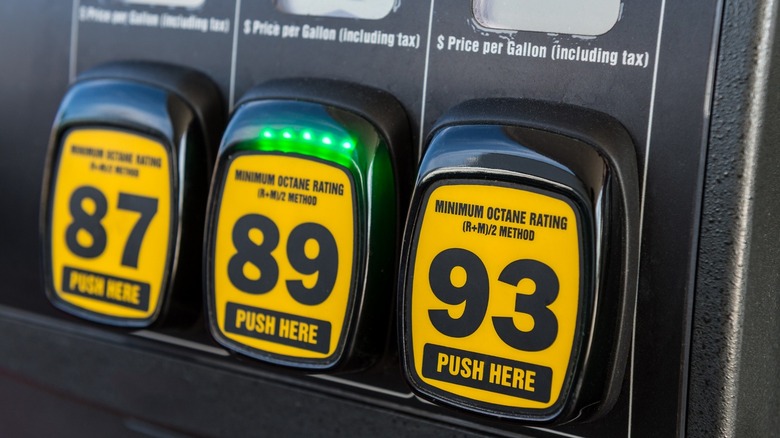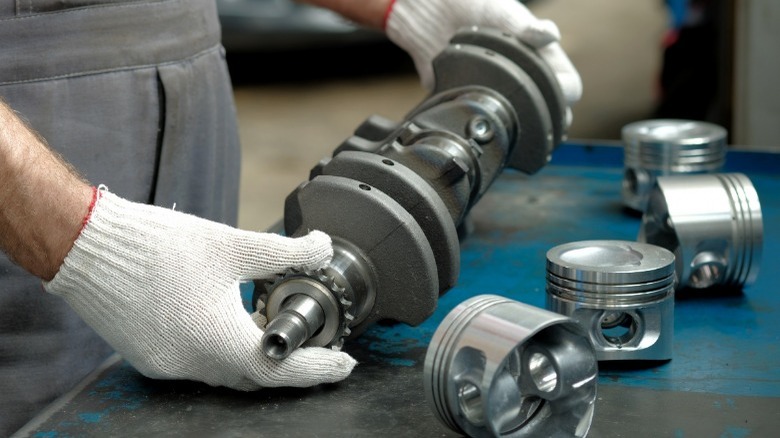How To Choose The Right Octane Gas For Your Car
There's a lot to know about vehicle ownership, from maintenance intervals and tire choice to oil type and tire pressure, but too often, people gloss over the fuel they're putting into their vehicles, opting for whatever is cheapest at the time. According to the U.S. Energy Information Administration, the octane rating, or knock rating, of gasoline refers to the ratio between the different hydrocarbon molecules in the fuel. Typically, in the U.S., octane ratings range between the Regular 87 and Premium 94, depending on the distributor and your region.
An 87-octane fuel contains 87% iso-octane (a hydrocarbon that contains eight carbon atoms) and 13% heptane (a hydrocarbon with six carbon atoms), and the higher the octane rating in fuel, the more resistant it is to premature ignition under pressure and heat alone — during the piston's compression stroke — as opposed to when the spark is applied. At least this used to be how knock rating was determined back when it was still actually an octane rating. The industry has since moved to the term knock rating or anti-knock rating because of additives and ethanol fuel blends, like E10. Nowadays, the knock rating of modern fuels is determined through testing with machinery that simulates engine conditions that would result in knocking and then assigning a rating equivalent to the standard octane ratings.
Why is octane rating important?
Knock ratings are vital to the operation of internal combustion engines because premature detonation can cause premature wear or even catastrophic damage to engine components. For an easy answer, all vehicles come with a very easy way to check which fuel is appropriate — the owner's manual. For example, in this 2014 Ford Fiesta owner's manual [PDF], the recommended fuel octane rating of 87 can be found on page 120 under "Fuel Quality – Gasoline."
In more complicated terms, most cars will run fine on regular gasoline because their motors are not tuned for high performance. According to AMSOIL and The Louisiana Department of Natural Resources, most gasoline engines have compression ratios of around 10:1 and will run just fine on regular 87-octane gasoline. Generally speaking, high-performance vehicles that are trying to achieve higher power and torque output are going to either have a higher displacement or higher compression ratio. The 2022 Toyota GR86, for example, manages to extract 184 lb-ft. of torque and 228 HP from a naturally-aspirated 2.4 liter, four-cylinder boxer engine, but requires a minimum octane rating of 93 thanks to its 12.5:1 compression ratio.
It's important to note that while using a lower octane fuel will almost certainly damage your engine eventually, the same isn't necessarily true about putting premium into a vehicle designed for regular, with higher octane fuels recommended if you are experiencing knocking, especially at low altitudes (via Mike Shaw Subaru).

